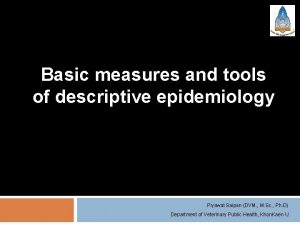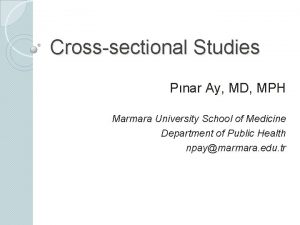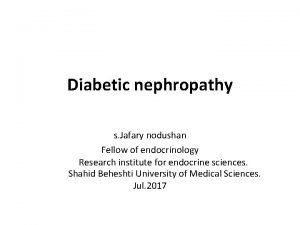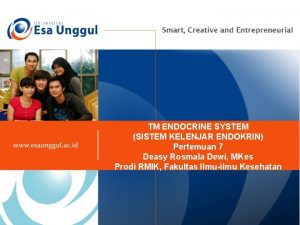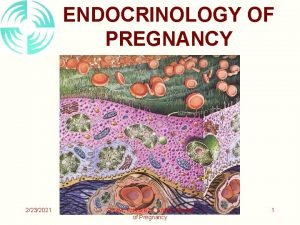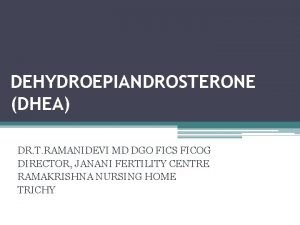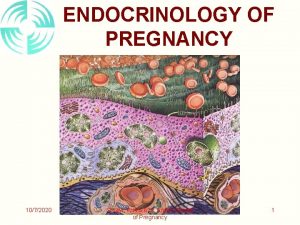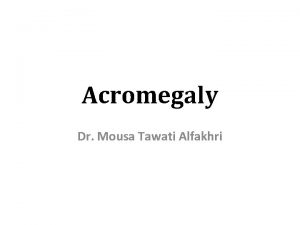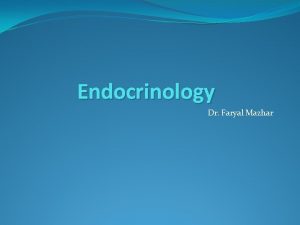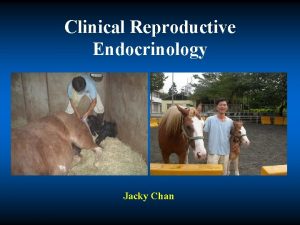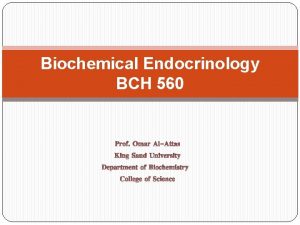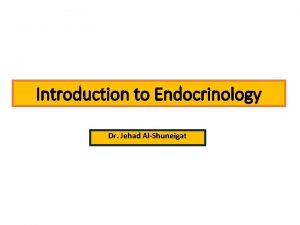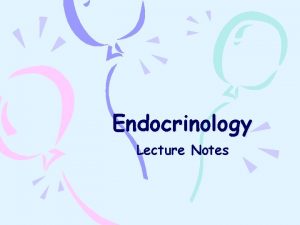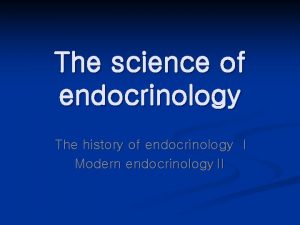Endocrinology Acromegaly Acromegaly Very rare Prevalence in the











- Slides: 11

Endocrinology Acromegaly


Acromegaly �Very rare �Prevalence in the order of 1 in 200, 000 �Usually diagnosed between age 40 and 60 �No difference in gender susceptibility �Insidious onset

Pathogenesis �Most commonly caused by pituitary adenoma Ø Increased secretion of growth hormone Ø Acts in liver to release IGF-1 (insulin-like growth factor)

So what are the symptoms? �Tumour �Growth hormone �IGF-1



On examination �Characteristic facial appearance: Coarse, Frontal bossing, ↑sinuses, ↑ tongue, Prognathism (jaw protrusion), separation of teeth �Deep voice �Carpal tunnel syndrome �Hand & foot enlargement �Visual fields (bitemporal hemianopia) �Organomegaly: Goitre, Hepatosplenomegaly

Investigations �Glucose tolerance test with measurement of growth hormone level. Ø (Should be inhibited by glucose) Ø (Growth hormone secretion is episodic and so a random GH alone is unlikely to be useful) �Evidence of other pituitary involvement �MRI scan to identify adenoma

Management � Surgery: trans-sphenoidal adenomectomy or craniotomy for very large tumours. � Pituitary radiotherapy: useful if tumour is not fully removed and reduces GH progressively over years. � Drugs: Ø Somatostatin analogues (octreotide, lanreotide) suppress GH in 60% Ø Dopamine agonists (bromocriptine, cabergoline) lower but rarely normalize GH Ø GH receptor antagonist (pegvisomant) normalizes IGF-I in >90% of pts.

Bonus marks management Management of: �↑ Cardiovascular morbidity & mortality – from HTN, impaired GTT (25%), Diabetes Mellitus (10%) �↑ Cardiac failure (heart muscle disease), ↑IHD, ↑CVD �Obstructive sleep apnoea �Arthropathy (50%) �Osteoporosis �Colorectal cancer Complication of treatment: hypopituitarism
 Period prevalence vs point prevalence
Period prevalence vs point prevalence Period prevalence vs point prevalence
Period prevalence vs point prevalence Defination of epidemiology
Defination of epidemiology Period prevalence vs point prevalence
Period prevalence vs point prevalence Pediatric endocrinology near cameron park
Pediatric endocrinology near cameron park Endocrinology
Endocrinology Adrenomegaly adalah
Adrenomegaly adalah 2232021
2232021 Reproductive biology and endocrinology
Reproductive biology and endocrinology Endocrinology of pregnancy
Endocrinology of pregnancy Reproductive endocrinology near campbell
Reproductive endocrinology near campbell Acromegaly
Acromegaly
